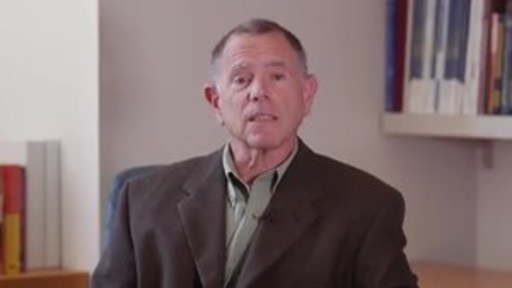LOS ANGELES, June 13, 2018 /PRNewswire/ --
Note: With this second quarter economic report for 2018, the UCLA Anderson Forecast introduces a new report, providing analysis and perspective on the outlook for the world's two largest economies, the United States and China. The Cathay Bank/UCLA Anderson Forecast U.S.-China Economic Report will be published quarterly in collaboration with Cathay Bank.
The overall economy appears to be growing at a steady pace, but there are potential threats that could affect the U.S. and California economic outlooks, according to the UCLA Anderson Forecast's second quarterly report for 2018. The risk of a trade war with one or more of the major U.S. trading partners, the uncertainties in Italian politics and their potential impact on the Euro-zone, the potential for withdrawal from NAFTA, and the now likely victory of Andres Manuel Lopez Obredor (AMLO) in the July Mexican presidential elections are among the elevated risks to the current forecast.
The National Forecast and a Look at Housing
Noting that the era of ultra-low interest rates has passed and the economy is at full employment, UCLA Anderson Forecast Senior Economist David Shulman writes that real GDP growth is expected to reach 3% for the balance of the year when measured from the fourth quarter of 2017 to the fourth quarter in 2018, but it will dip to 2% growth in 2019 and 1% in 2020. This is because the current strong job growth, which averaged 200,000 jobs per month in 2017, is not sustainable in a full-employment economy. Job growth is expected to average 133,000 per month for the remainder of 2018 before declining to 85,000 per month and 60,000 per month in 2019 and 2020, respectively. The unemployment rate will drop from its current 3.8% to 3.4% in mid-2019, but return to 3.8% by the end of 2020. As Shulman has noted in other forecasts, "A fully employed economy has difficulty growing without substantial increases in productivity."
At the same time, the trade deficit, in terms of real net exports, could increase from $622 billion in 2017 to $814 billion in 2020, a "result of the U.S. consuming more than it produces and needing to borrow to fund an increasing federal budget deficit. This is a direct consequence of a very low national savings rate," Shulman states. "All the Trump Administration can do in this regard is move around the trade deficit among our import partners, not reduce it."
Business investment, which may increase by seven percentage points in 2018 and 2019 before slowing in 2020, is expected to continue to be the driving force in the economy, thanks to the reduction in corporate tax rates, an allowance to write off 100% of equipment in the year it was purchased, and deregulatory policies of the administration in Washington, D.C.
The greatest current risks to the forecast of the U.S. economy stem from a potential trade war with China and the potential withdrawal from NAFTA. "A trade war implies higher tariffs and non-tariff barriers that work as a tax on the American people that would raise prices and restrict output. That is hardly the recipe for economic growth," Shulman writes.
In a separate report, Shulman notes that housing activity "has been the great disappointment of the economic recovery and expansion that began in 2009." Although housing starts have more than doubled since their lows of 2009–2011, they remain below the long-term average and nowhere near earlier boom periods. Housing starts across the U.S. are forecast to increase from 1.2 million units in 2017 to 1.34 million units and 1.40 million units in 2018 and 2019, respectively, far below the 59-year annual average of 1.435 units between 1959 and 2017.
Homeowners in high-demand areas and fast-growing cities "are sitting pretty and enjoying rapidly increasing house prices," Shulman writes. "On the other hand, if you are a middle-class potential home buyer or a struggling renter in those areas, you are facing a very personal affordability crisis."
The California Report
California employment hit another record high in April 2018. As the economy has been expanding as expected, the current forecast has not changed much since last quarter's forecast released in March 2018. Full employment has been less of a constraint on this growth with recent increases in the labor force.
It is anticipated that California's average unemployment rate will remain higher than the U.S. rate and be at 4.3% in 2020, a consequence of a younger and more entrepreneurial workforce.
The forecast for total employment growth for the current and the next two years is 1.7%, 1.8% and 0.8%, respectively, with payrolls growing at about the same rate. Real personal income growth is forecast to be 2.5%, 3.6% and 2.9% in 2018, 2019 and 2020, respectively.
"Affordable housing in California continues to be the subject of considerable discussion," writes UCLA Anderson Forecast Director Jerry Nickelsburg. His paper examines the complex relation between the state's employment growth, the attractiveness of California and the building, zoning and environmental restrictions affecting housing supply. Although the forecast calls for a continued rise in housing prices, "the impact on economic growth is not as great as one might expect," he notes.
Homelessness in the U.S., California and Los Angeles
It's no secret that the country is experiencing a crisis in homelessness, particularly in Los Angeles. In a companion piece, UCLA Anderson Forecast Economist William Yu highlights these statistics: The percentage of the U.S. homeless population declined from 0.2% in 2012 to 0.17% in 2017. In California, the rate increased from 0.32% to 0.34%, and in Los Angeles, it rose from 0.35% (35,500 people) in 2013 to 0.52% (53,200 people) in 2018.
Similar figures exist for the unsheltered homeless populations: the rate for those without shelter in the U.S. dropped from 0.07% in 2012 to 0.06% in 2017. California's rate, meanwhile, rose from 0.2% in 2012 to 0.23% in 2017, while the unsheltered homeless rate in Los Angeles increased from 0.23% (22,600) in 2013 to 0.39% (39,800) in 2018.
Los Angeles and California have a much higher proportion of unsheltered people among their homeless populations than the nation as a whole, with figures at 73% for Los Angeles and 68% for California, compared to 35% for the nation. The bottom line is that homelessness is a growing problem in Los Angeles. William Yu's analysis of the complex growing crisis in Los Angeles shows it is due to a variety of factors, including mild weather, high housing prices, high rental costs, and disparity in household income.
The U.S.-China Economic Report
With trade and investment between the U.S. and China central to the risks shaping the forecast, the UCLA Anderson Forecast is pleased to announce a new series of reports, in collaboration with Cathay Bank, looking at the fundamental economic relations between the two countries and the implications of changes to these relations. The first report, published on June 13, and future installments in the series will be available on the UCLA Anderson Forecast website: anderson.ucla.edu/centers/ucla-anderson-forecast.
All of the economists' reports will be presented at the UCLA Anderson Forecast's quarterly conference on Wednesday, June 13, 2018. The conference also features a panel discussion that will focus on the current state of residential real estate and the effects of zoning on future home construction. Panelists will include: Stuart Gabriel, Arden Realty Chair, Professor of Finance, UCLA Anderson School of Management, and Director, UCLA Ziman Center for Real Estate; Scott Wiener, California State Senator, District 11; Cynthia Strathmann, Executive Director, SAJE; Suzanne Fuentes, Mayor, City of El Segundo; and Michael Lens, Associate Faculty Director, UCLA Lewis Center for Regional Policy Studies, and Associate Professor of Urban Planning and Policy, UCLA Luskin School of Public Affairs. John Tipton, partner with Allen Matkins, will provide results of the most recent Allen Matkins/UCLA Anderson Forecast CRE Survey.
The conference will be held in Korn Convocation Hall at UCLA Anderson School of Management. For more information about attending the conference, please visit anderson.ucla.edu/centers/ucla-anderson-forecast/june-2018-economic-outlook.
About UCLA Anderson Forecast
UCLA Anderson Forecast is one of the most widely watched and often-cited economic outlooks for California and the nation, and was unique in predicting both the seriousness of the early 1990s downturn in California and the strength of the state's rebound since 1993. More recently, the Forecast was credited as the first major U.S. economic forecasting group to declare the recession of 2001. Visit UCLA Anderson Forecast at uclaforecast.com.
About UCLA Anderson School of Management
UCLA Anderson School of Management is among the leading business schools in the world, with faculty members globally renowned for their teaching excellence and research in advancing management thinking. Located in Los Angeles, gateway to the economies of Latin America and Asia and a city that personifies innovation in a diverse range of endeavors, UCLA Anderson's MBA, Fully Employed MBA, Executive MBA, Global Executive MBA for Asia Pacific, Master of Financial Engineering, Master of Science in Business Analytics, doctoral and executive education programs embody the school's Think in the Next ethos. Here some 1,800 students annually are trained to be global leaders seeking the business models and community solutions of tomorrow.
Follow Us @UCLAAnderson
Twitter, Instagram, Facebook, LinkedIn, YouTube
Contact Information
UCLA Anderson Office of Media Relations, (310) 206-7537, [email protected]
SOURCE UCLA Anderson School of Management
Related Links
WANT YOUR COMPANY'S NEWS FEATURED ON PRNEWSWIRE.COM?
Newsrooms &
Influencers
Digital Media
Outlets
Journalists
Opted In






Share this article